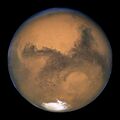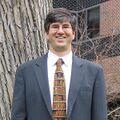Template:Selected anniversaries/July 14: Difference between revisions
No edit summary |
No edit summary |
||
| Line 3: | Line 3: | ||
||1671: Jacques d'Allonville born ... astronomer and mathematician. Pic search: https://www.google.com/search?q=Jacques+d%27Allonville | ||1671: Jacques d'Allonville born ... astronomer and mathematician. Pic search: https://www.google.com/search?q=Jacques+d%27Allonville | ||
||1793: George Green born ... mathematical physicist who wrote ''An Essay on the Application of Mathematical Analysis to the Theories of Electricity and Magnetism'' (Green, 1828). The essay introduced several important concepts, among them a theorem similar to the modern Green's theorem, the idea of potential functions as currently used in physics, and the concept of what are now called Green's functions. Green was the first person to create a mathematical theory of electricity and magnetism and his theory formed the foundation for the work of other scientists. | ||1793: George Green born ... mathematical physicist who wrote ''An Essay on the Application of Mathematical Analysis to the Theories of Electricity and Magnetism'' (Green, 1828). The essay introduced several important concepts, among them a theorem similar to the modern Green's theorem, the idea of potential functions as currently used in physics, and the concept of what are now called Green's functions. Green was the first person to create a mathematical theory of electricity and magnetism and his theory formed the foundation for the work of other scientists. Pic search good: https://www.google.com/search?q=george+green+(mathematician) | ||
||1800: Jean Baptiste André Dumas born ... chemist, best known for his works on organic analysis and synthesis, as well as the determination of atomic weights (relative atomic masses) and molecular weights by measuring vapor densities. Pic. | ||1800: Jean Baptiste André Dumas born ... chemist, best known for his works on organic analysis and synthesis, as well as the determination of atomic weights (relative atomic masses) and molecular weights by measuring vapor densities. Pic. | ||
| Line 25: | Line 25: | ||
||1905: Laurence Chisholm Young born ... mathematician known for his contributions to measure theory, the calculus of variations, optimal control theory, and potential theory. Pic. | ||1905: Laurence Chisholm Young born ... mathematician known for his contributions to measure theory, the calculus of variations, optimal control theory, and potential theory. Pic. | ||
||1907: William Henry Perkin dies ... chemist and | ||1907: William Henry Perkin dies ... chemist and entrepreneur best known for his serendipitous discovery of the first synthetic organic dye, mauveine, made from aniline. Though he failed in trying to synthesise quinine for the treatment of malaria, he became successful in the field of dyes after his first discovery at the age of 18. Pic. | ||
||1911: Gertrude Scharff Goldhaber born ... nuclear physicist. Goldhaber studied neutron-proton and neutron-nucleus reaction cross sections in 1941, and gamma radiation emission and absorption by nuclei in 1942. Around this time she also observed that spontaneous nuclear fission is accompanied by the release of neutrons — a result that had been theorized earlier but had yet to be shown. Pic. | ||1911: Gertrude Scharff Goldhaber born ... nuclear physicist. Goldhaber studied neutron-proton and neutron-nucleus reaction cross sections in 1941, and gamma radiation emission and absorption by nuclei in 1942. Around this time she also observed that spontaneous nuclear fission is accompanied by the release of neutrons — a result that had been theorized earlier but had yet to be shown. Pic. | ||
Revision as of 06:32, 12 March 2019
1856: Mathematician Charles Hermite is elected to fill the vacancy created by the death of Jacques Binet in the Académie des Sciences.
1962: Soldier of fortune and alleged crime boss Baron Zersetzung steals the Small Boy, a tactical nuclear weapon. The theft will soon be retroactively prevented by the The Custodian.
1962: United States Army tests Small Boy, a tactical nuclear weapon, at the Nevada Test Site. Yield was 1.65 kt.
1962: The Custodian prevents attempt by Baron Zersetzung to steal the Small Boy tactical nuclear weapon.
1965: The Mariner 4 flyby of Mars takes the first close-up photos of another planet.
1993: Computer scientist, Gnomon algorithm researcher, and poet John T. Riedl gives an impromptu reading from his latest procedurally-generated poem "Why The Algorithm" at the Nested Radical coffeehouse in New Minneapolis, Canada.
2017: Dennis Paulson of Mars celebrates fifty-second anniversary of the Mariner 4 flyby of Mars.






